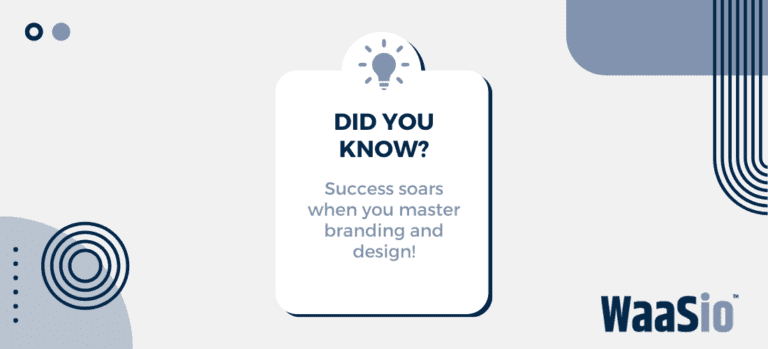
Keyword Phrase Optimization: Tips and Tricks
In the pursuit of search engine optimization, effective keyword phrase usage is pivotal. Let’s explore some practical tips and tricks to optimize your keyword phrases:
Understanding Keyword Density
- Aim for a balanced keyword density—neither too sparse nor too crowded.
- Overuse of keywords can lead to penalties for keyword stuffing.
Leveraging Long-Tail Keywords
- Long-tail keywords can capture specific search intents and reduce competition.
- They often yield higher conversion rates as they target niche demographics.
Remember, optimization is not limited to text. Consider these aspects:
- URL Structure: Include relevant keywords in your URLs for added SEO value.
- Alt Text for Images: Descriptive alt texts with keywords enhance accessibility and SEO.
Avoid common pitfalls by adhering to these guidelines:
- Never sacrifice content quality for keyword inclusion.
- Ensure keywords do not disrupt the natural flow of the article.
Effective keyword phrase optimization is both an art and a science. By following these tips and employing tools like keyword analyzers, you can refine your strategy for maximum impact.
As we progress, understanding common mistakes and learning how to avoid them becomes vital. The next section will shed light on these pitfalls, keeping you one step ahead in the SEO game.

Understanding the Pillars of Effective SEO Marketing
Effective SEO marketing is built on several critical pillars. Understanding and implementing these can dramatically improve your site’s visibility and user engagement. Below are the key components:
- Technical SEO: Ensuring that a website’s infrastructure is optimized for search engine crawling and indexing.
- On-Page SEO: Refining individual webpage elements like titles, headings, and content to rank for specific keywords.
- Off-Page SEO: Building authority through backlinks and social signals to enhance a website’s reputation and credibility.
Technical Foundations
The technical aspect of SEO ensures that websites comply with search engine guidelines, which is crucial for top rankings. This includes:
- Fast loading speeds
- Mobile responsiveness
- Clean and structured website architecture
Content and On-Page Best Practices
Content remains king in the realm of SEO. On-page optimization includes:
- Targeted keyword placement
- Meta descriptions and title tags
- Internal linking strategies
Expanding Digital Footprint
Off-Page SEO involves activities outside of the website to boost its domain authority. Elements include:
- Link-building campaigns with relevant, high-quality websites
- Social media marketing to increase online presence
- Influencer collaborations and guest blogging
In the next section, we’ll focus on how SEO is not just a toolkit to outperform competitors but a fundamental marketing necessity for any business aiming to sustain and grow in the digital marketplace.

Unveiling the Power of SEO Marketing
In the ever-evolving digital marketplace, SEO marketing stands as a pivotal component for online success. Businesses leveraging SEO tactics gain substantial visibility, propelling them ahead of competition. Here’s why every forward-thinking company should integrate SEO into their marketing efforts:
- Increased Visibility: SEO helps your website appear at the top of search engine results, translating to more potential customer exposure.
- Targeted Traffic: Not just any traffic, but traffic interested in what you offer thanks to strategic keyword targeting.
- User Experience: SEO involves optimizing your site’s user experience, which Google now prioritizes as a ranking factor.
- Brand Credibility: A solid online presence builds trust. When your brand consistently appears in searches, credibility grows.
The Role of Content in SEO
At the heart of SEO lies content; it’s not just about having relevant keywords but also about delivering value through content. Here’s how a dedicated content strategy boosts SEO:
- Quality Content: Provides useful information that meets your audience’s needs, keeping them engaged and on your page longer.
- Content Planning: Aligns topics with search trends and business goals, ensuring every piece of content serves a purpose.
With WaaSio’s services, businesses can harness these benefits to create a tailored SEO content strategy that resonates with both search engines and audiences.
Transitioning to Strategic Content Planning
Understanding the significance of SEO is just the first step. Next, we’ll explore the intricacies of creating a content plan that aligns perfectly with SEO objectives, driving not just traffic, but meaningful engagement.
Stay tuned as we delve into the blueprint for SEO success through strategic content planning.

SEO Marketing: Why It’s Essential for Digital Growth
In an era where digital presence dictates market success, SEO marketing is not optional; it’s essential. The reasons for its critical role in digital growth are compelling:
- Visibility and Brand Awareness: SEO increases your online visibility, making your brand more recognizable to potential customers.
- User Trust and Credibility: Websites that rank higher are often seen as more trustworthy and authoritative by users.
- Competitive Advantage: A robust SEO strategy can put you ahead of competitors, capturing more market share.
Long-Term Sustainable Growth
Unlike paid advertising which stops generating traffic once the campaign ends, SEO provides:
- Consistent organic traffic
- Growing return on investment over time
- Continuous lead generation
Adaptation to Evolving User Behavior
SEO strategies evolve with changes in how people search and interact online, ensuring your business remains relevant. This includes:
- Optimizing for voice search and mobile queries
- Creating content that aligns with current trends and user intent
SEO marketing is a key player in the long game of digital marketing. While the previous sections highlighted the strategic execution of SEO, our conclusion will encapsulate the transformative impact of integrating WaaSio’s marketing strategies into your business’s SEO practices, ensuring a solid trajectory towards sustainable growth and market leadership.

The Impact of Keyword Phrase on SEO Ranking
Keywords are the backbone of SEO ranking. Their strategic deployment can significantly influence your website’s position in search engine results. Let’s break down their impact:
Signal to Search Engines
- Keywords serve as signals to search engines, indicating the relevance of your content to specific queries.
- Effective keywords enhance the likelihood of appearing in top search results.
User Experience and Engagement
- Relevant keyword phrases improve user experience by aligning content with search intent.
- Higher engagement metrics from users can further boost your SEO rankings.
A strategic keyword approach should focus on:
- Identifying high-volume search terms that relate to your content.
- Incorporating a mix of primary and secondary keywords to cover a range of related topics.
On-Page SEO Elements
- Titles, headings, and meta descriptions with keywords all contribute to on-page SEO.
- Internal linking with keyword-rich anchor text can distribute SEO value throughout your site.
To harness the full potential of keyword phrases for SEO ranking:
- Continuously monitor keyword performance and adjust as needed.
- Stay updated with the latest search algorithm changes and best practices.
By understanding the profound impact keywords have on SEO, you can craft content that not only attracts but also retains user attention.

The Blueprint for SEO Success: Crafting Your Content Strategy
Creating an effective SEO content strategy is like constructing a building; you need a solid foundation, the right tools, and a clear plan. Here’s the blueprint for establishing your content approach:
- Define Your Objectives: Clearly state what you hope to achieve with your content. Is it brand awareness, lead generation, or sales?
- Analyze Your Audience: Identify and understand your target audience to tailor content that addresses their specific interests and needs.
- Competitor Research: Study your competition to discover content gaps you can fill and opportunities to outperform them.
Structuring Your Content Plan
With objectives in place, structuring your content becomes paramount:
- Content Calendar: Organize when and what you’ll publish. This keeps your strategy focused and accountable.
- SEO Keyword Integration: Seamlessly integrate SEO best practices and keywords into each piece without compromising readability.
Maintaining Flexibility
While adherence to the plan is crucial, be prepared to adapt based on analytics and shifting market trends.
Measuring and Tweaking Your Strategy
Key to any strategy is measurement:
- Utilize Analytics: Track the performance of your content to understand what works and refine your approach accordingly.
- Continuous Optimization: SEO isn’t a one-time setup; it is a cycle of optimization and improvement.
This blueprint is essential for maximizing ROI in digital marketing. Up next, we will dissect the importance of keyword research, a fundamental pillar in crafting your content strategy that leads to capturing the right audience.

Keyword Research: The Cornerstone of Targeted Content
At the core of a potent SEO strategy lies meticulous keyword research. It’s the process that ensures the right people find your content at the right time. Here’s how to conduct keyword research effectively:
- Identify Your Keywords: Start with a broad list of topics relevant to your business and then drill down to specific keywords.
- Understand Search Intent: Go beyond the words; understand why users search for these terms to better align your content with their needs.
- Analyze Keyword Difficulty: Select keywords that strike a balance between high search volume and attainability for your site.
Finding the Right Tools
Accurate keyword research requires reliable tools:
- SEO Analytic Platforms: Use platforms like Google Keyword Planner or SEMrush to uncover insights on keyword performance.
- Competitor Analysis Tools: Check which keywords competitors are ranking for and identify gaps in their strategies.
Long-Tail Keywords: A Hidden Gem
Don’t overlook long-tail keywords – they have less competition and often boast higher conversion rates due to their specificity.
From Keywords to Content Creation
Having researched and selected your keywords, the next step is integrating them into your content seamlessly:
- Keyword Placement: Strategically place keywords in titles, headings, and throughout the content while maintaining natural flow.
- Content Diversification: Incorporate keywords across various types of content – blogs, videos, and infographics – to cast a wider net.
Armed with a strategic selection of keywords, the stage is set for crafting engaging, high-quality content. In the following section, we will delve into the art of creating content that resonates with audiences and amplifies your SEO efforts.

Common Mistakes to Avoid with Keyword Phrasing
Avoiding pitfalls in keyword phrasing is crucial for maintaining a strong SEO ranking. Here are some common mistakes to sidestep:
Neglecting Keyword Research
- Skipping thorough keyword research can lead to targeting phrases that don’t align with your audience’s search intent.
- Utilizing generic keywords instead of niche-specific phrases may increase competition unnecessarily.
Overlooking Keyword Relevance
- Choosing keywords with high search volume but low relevance to your content can dilute your message and disappoint visitors.
- Irrelevant keywords could harm user experience and damage SEO rankings over time.
When optimizing content, remember:
- Keyword Stuffing: Overusing keywords disrupts readability and can incur search engine penalties for spammy behavior.
- Forgetting Content Quality: Prioritizing keywords over content quality devalues the user experience and can lead to reduced engagement.
Additional key points include:
- Ignoring the use of LSI keywords (Latent Semantic Indexing) which help search engines understand context.
- Omitting keywords from crucial areas like the title, URL, or meta descriptions.
By staying attentive to these aspects, you pave the way for a more effective and engaging keyword strategy. As we move forward, we will explore advanced techniques to refine your keyword phrase research, ensuring that your SEO efforts bear fruit.

Advanced Techniques for Keyword Phrase Research
Diving deeper into keyword research requires advanced techniques that can uncover the full spectrum of opportunities for your content. Here’s how to enhance your research:
Utilizing Competitor Analysis
- Examine competitors’ websites to discover valuable keyword phrases they’re ranking for.
- Analyze their content structure and keyword placement for insights.
Leveraging Keyword Research Tools
- Employ sophisticated tools like Ahrefs, SEMrush, or Moz to gain deeper keyword insights.
- Utilize features such as keyword difficulty scores and search volume trends.
Beyond basic tools, consider:
- Exploring semantic search capabilities to understand related keywords and topics.
- Investigating user forums and social media to capture real-time language and emerging trends.
Keep these strategies in mind:
- Track seasonal fluctuations and events that may affect keyword popularity.
- Align your findings with your content calendar for timely relevance.
By utilizing these advanced techniques, you’re equipped to develop a robust keyword phrase strategy, setting the stage for authoritative and searchable content. In our conclusion, we’ll summarize the key takeaways and guide you on effectively applying your newfound keyword phrase expertise.

Engaging Your Audience with High-Quality Content
Engaging content is the lifeblood of successful SEO marketing. It’s not just about getting visitors to your site but captivating them once they arrive. Here’s how you can create content that hooks your audience:
- Value Proposition: Ensure every content piece provides real value, answering questions or solving problems for your readers.
- Content Relevance: Align your articles, videos, and infographics closely with your audience’s interests and search intentions.
- Tone and Style: Adopt a tone that resonates with your audience, whether it’s professional, conversational, or educational.
Interactive and Multimedia Content
Enhance engagement through diversified content formats:
- Interactive Elements: Incorporate quizzes, surveys, or calculators to increase user interaction and time spent on your site.
- Multimedia Usage: Break up text with images, videos, and infographics to keep content visually appealing and easy to digest.
Storytelling as an SEO Tool
Effective storytelling can turn casual visitors into loyal customers. Craft narratives around your brand’s values and user experiences to form deeper connections.
Consistency and Quality Control
Publishing regularly while maintaining high standards is crucial:
- Editorial Standards: Set high-quality standards for all published content, ensuring it reflects well on your brand.
- Content Schedule: A consistent posting schedule keeps your audience engaged and coming back for more.
With a commitment to quality content, you’re poised to establish authority and trust in your niche. Moving forward, we will explore how tailoring this content specifically to your business goals creates a synergistic effect, optimizing both user experience and SEO performance.

Aligning SEO and Business Goals for Maximum Impact
For SEO initiatives to truly flourish, they must be intricately aligned with your overarching business objectives. It’s a strategic fusion that drives both online visibility and business growth. Consider these strategies to ensure alignment:
- Goal-Oriented Content: Tailor your content to meet specific business goals, whether that’s lead generation, brand awareness, or customer education.
- Performance Metrics: Define key performance indicators (KPIs) such as organic traffic, conversion rates, and SERP rankings that directly reflect your business aspirations.
- Content-SEO Symbiosis: Use your content to answer the “why” behind your products and services, satisfying both user intent and enhancing SEO.
Integrating SEO into Your Marketing Funnel
Effective alignment involves understanding where SEO fits within your marketing funnel:
- Top of Funnel: Utilize informational content to improve brand visibility and capture potential leads.
- Middle of Funnel: Offer in-depth content that educates and nurtures leads down the path to purchase.
- Bottom of Funnel: Create conversion-optimized content that persuades and converts leads into customers.
Adaptive Content Strategies
Business goals and markets constantly evolve. Adapt your content and SEO strategies to remain relevant and effective.
Next Steps in Your SEO Journey
As you refine your SEO approach to align with business goals, you lay the groundwork for measurable, scalable marketing success. But the journey doesn’t end here. Up next, we will wrap up with the crucial steps for leveraging WaaSio’s expertise to bring your tailored SEO strategies to life.

Conclusion: Maximizing Your Keyword Phrase Potential
To maximize the potential of your keyword phrases, it’s essential to integrate the strategies we’ve discussed. Here is a recap of the critical points of keyword phrase optimization:
Strategic Research and Application
- Invest time in meticulous keyword research to ensure relevance and targeting.
- Apply keywords strategically within content, titles, and meta descriptions.
Balance and Quality
- Maintain a healthy keyword density to avoid penalties for over-optimization.
- Never compromise on content quality for the sake of keyword inclusion.
Keep in mind:
- Continuous Optimization: SEO is an ongoing effort—regularly review and update your keyword strategy.
- User Intent: Align your keywords with user intent to drive engagement and conversions.
As you implement these techniques:
- Stay updated with SEO trends and algorithm updates to keep your strategy effective.
- Use advanced tools for more profound insights into keyword performance and opportunities.
In summary, keyword phrase optimization is a dynamic and critical aspect of a successful SEO strategy. By avoiding common pitfalls, employing strategic research, and focusing on content quality, you can leverage the full power of keyword phrases. With the right approach, your content will not only rank higher but also resonate more deeply with your target audience.
Embark on your journey to SEO success with confidence, utilizing every keyword as a stepping stone to greater online visibility and influence.














